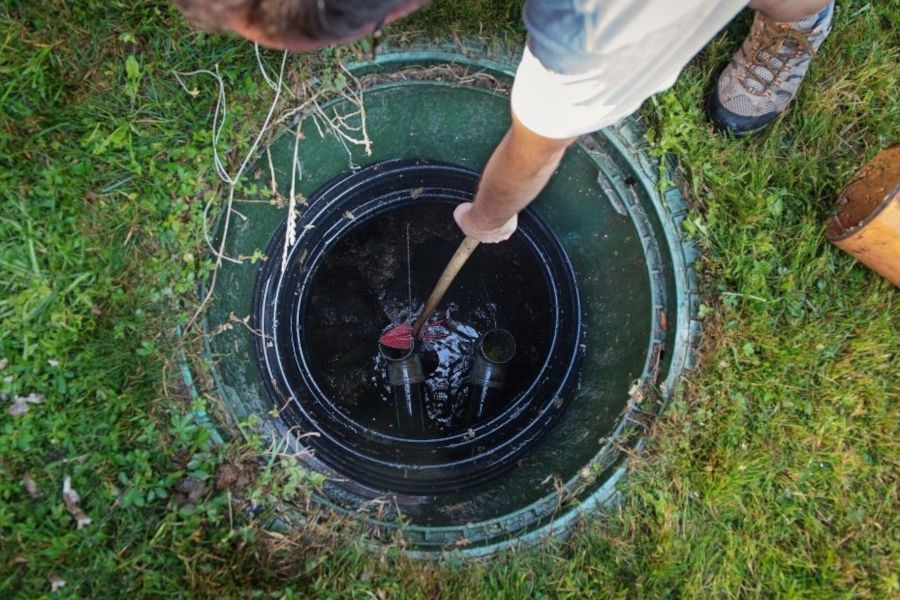Every homeowner with a septic system knows the importance of regular septic pumping. However, few truly understand the mechanics behind the process.
All Septic & Sewer sheds light on the intricate world of septic pumping, ensuring you’re well-informed and ready for your next maintenance appointment.
What Is A Septic System?
A septic system is a vital underground wastewater treatment setup primarily found in rural homes without centralized sewer systems. At its heart lies the septic tank, a large container separating waste into three layers. Over time, solids descend, forming a sludge layer at the tank’s base.
Conversely, lighter materials like fats, oils, and proteins rise to fashion the scum layer on top. Nestled between these is the effluent, a zone of partially treated wastewater, eventually directed towards the drain field for further natural filtration.
The Role Of Bacteria
One of the key players in septic systems is bacteria. These microorganisms help break down organic waste into gases, water, and simpler organic compounds. This natural process is crucial for reducing the volume of solids over time. However, not all solids decompose, leading to the accumulation of sludge that needs pumping out.
What Is Septic Pumping?
Septic pumping is an essential maintenance routine vital to a septic system’s health. By meticulously removing solids and liquids from the tank, it prevents overflows. This serves as a primary defense, protecting the environment and nearby properties from potential contamination and system failures.
The Septic Pumping Process
The septic pumping process involves multiple, well-orchestrated steps, each critical for the system’s health and efficiency.
Gaining Access To The Septic Tank Lids
The onset of the process demands the meticulous unveiling of the tank access lids. Modern septic systems, typically those installed post the 1980s, come with dual compartments. Both of these will require exposure. The crew then proceeds to open the lids.
While it sounds straightforward, this step can be quite intricate. Factors like corrosion or just plain aging can pose challenges. Occasionally, due to wear and tear, the lid might require a replacement.
Emptying The Tank Thoroughly
Connected to a state-of-the-art vacuum truck, a powerful hose delves deep into the septic tank‘s confines, diligently working to remove both liquids and solids. This hose, designed for efficiency, typically ensures a comprehensive extraction of waste.
However, there are occasions when the density or consistency of the materials poses challenges. In such cases, even with its formidable power, the hose might struggle to eliminate certain thick residues or tenacious solids completely.
Washing And Cleaning The Tank
After the meticulous extraction process, the emphasis shifts to maintaining a hygienic tank environment. Your dedicated servicing technician, armed with expertise and tools, will introduce a substantial volume of water into the tank. This acts as a flushing mechanism, targeting stubborn residues and any lingering solids.
The goal is not just cleanliness, but to restore the tank’s interior to a state that closely mirrors its original, uncontaminated condition.
Comprehensive Visual Assessments
Once the tank stands devoid of waste and shines with cleanliness, it becomes the perfect canvas for a detailed inspection. The crew, leveraging their expertise, meticulously assesses every nook and cranny.
Both the internal sanctum and the external facade of the tank undergo rigorous scrutiny to detect potential adversaries like encroaching roots or telltale signs of wear and tear. In this investigative process, the septic tank baffles and the integral dividing wall receive special attention, confirming their structural integrity.
Concluding With Lid Closure And Reburial
After ensuring the tank’s robust health and structural integrity, the culmination of the process beckons. The crew diligently secures the lid, sealing the tank’s contents away from the world above. Traditionally, septic tanks enjoy a cozy spot between six to twelve inches underground.
But, in instances where they’re placed at atypical depths, technicians often consider the strategic addition of risers. Such modifications provide enhanced access, simplifying future inspections and maintenance endeavors.
The Importance Of Regular Pumping
Taking good care of septic systems means pumping them regularly. Doing this offers many long-term benefits.
- Preventing Overflows: Regular pumping prevents sludge and scum from reaching high levels and clogging the drain field.
- Protecting Your Property: Overflows can lead to wastewater surfacing on your property, posing health risks and damaging the environment.
- Longevity of the System: Routine pumping and maintenance can significantly extend the lifespan of your septic system, saving you considerable costs in the long run.
Ignoring these vital maintenance steps can lead to detrimental effects, making proactive measures essential for every homeowner.
Let All Septic & Sewer Handle Your Routine Septic Pumping
Understanding the inner mechanics of septic pumping highlights its significance. With consistent care and maintenance, homeowners can guarantee their septic systems run smoothly, securely, and stand the test of time. It’s always wise to reach out to experts when in doubt.
If you have further questions or wish to ensure the best care for your septic system, don’t hesitate to contact All Septic & Sewer. For updates and more insights, be sure to follow us on Facebook.



